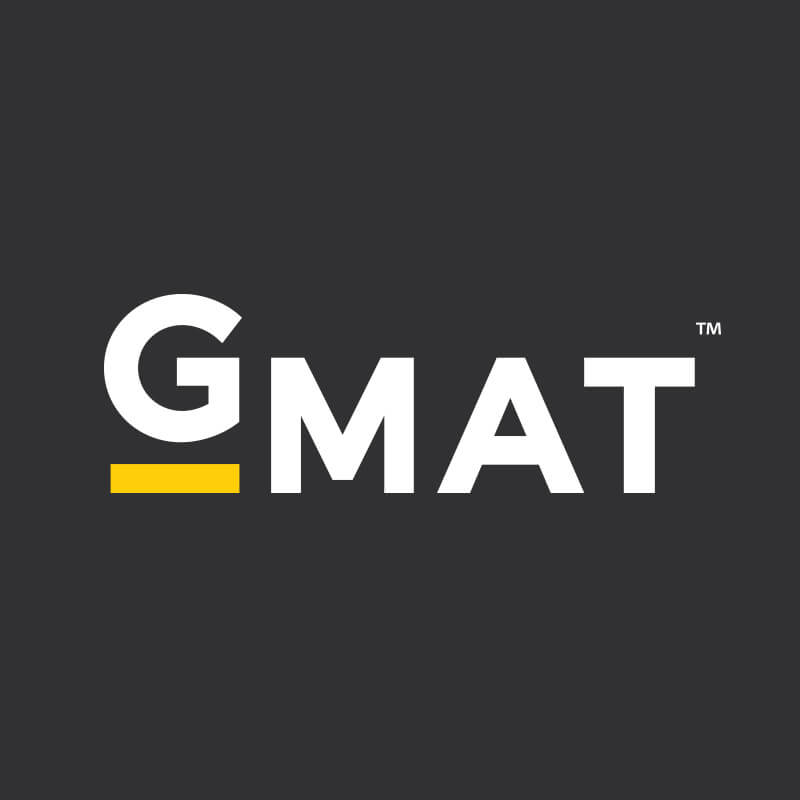GMAT Quantitative Reasoning: Strategies and Tips to Help You Master It

The GMAT (Graduate Management Admission Test) is a standardized test used by graduate business schools to assess the academic readiness of potential students. The GMAT consists of four sections: Analytical Writing, Integrated Reasoning, Verbal Reasoning, and Quantitative Reasoning. This blog post will focus on the Quantitative Reasoning section of the GMAT.
Understanding the GMAT Quantitative Reasoning Section: An Overview
The GMAT Quantitative Reasoning section consists of 31 multiple-choice questions, with a time limit of 62 minutes. The questions are divided into two types: Problem-Solving and Data Sufficiency. Problem-Solving questions require you to solve a problem using mathematical principles and concepts, while Data Sufficiency questions ask you to determine whether or not the given information is sufficient to answer a question.
When preparing for the GMAT Quantitative Reasoning section, it’s important to understand the types of questions that will be asked and how they are structured. It’s also important to practice solving problems in order to become familiar with the format and types of questions that will be asked. Additionally, it’s helpful to review basic math fundamentals such as arithmetic, algebra, geometry, and data analysis in order to ensure that you have a strong grasp of these topics before taking the exam.

By understanding the structure of the GMAT Quantitative Reasoning section and practicing problem-solving techniques, you can increase your chances of success on this portion of the exam. With preparation and practice, you can gain confidence in your ability to answer quantitative reasoning questions correctly on test day.
GMAT Quantitative Reasoning: What You Need to Know About the Types of Questions
Problem-Solving questions are the most common type of quantitative reasoning question. These questions require you to solve a problem or calculate an answer based on given information. You may be asked to solve equations, calculate percentages, or work with fractions and decimals. Problem-solving questions can also include word problems that require you to use the information provided in order to determine the correct answer.
Data Sufficiency questions ask you to determine if there is enough information provided in order for you to answer a question accurately. In these types of questions, you will be presented with two statements and asked if statement A alone is sufficient, statement B alone is sufficient, both statements together are sufficient, or if neither statement is sufficient. These types of questions test your ability to analyze data and make decisions based on the given information.
No matter which type of question you are presented with in the GMAT quantitative reasoning section, it’s important that you read each question carefully and understand what is being asked before attempting to answer it. By taking your time and reading each question thoroughly, you can ensure that you have all the necessary information needed to accurately answer the question.
Developing a Study Plan for GMAT Quantitative Reasoning
In order to prepare for the GMAT quantitative reasoning section, it’s important that you develop a study plan that includes both practice tests and review sessions with an experienced tutor or mentor who can provide feedback on your performance.
It’s also important that you familiarize yourself with the types of questions that will appear on the test so that you can identify areas where you need additional help or practice. Additionally, it’s beneficial to take advantage of online resources such as practice tests or tutorials which can help improve your understanding of key concepts related to quantitative reasoning.
Mastering GMAT Quantitative Reasoning: Tips for Solving Difficult Problems
When attempting to master the GMAT quantitative reasoning section, it’s important to practice as much as possible. Start by familiarizing yourself with the types of questions you’ll encounter on the exam. Then, take practice tests and use them to identify areas where you need more work or improvement.
Once you have identified any weak spots, focus your studying on those topics in order to become more proficient in them. Additionally, it’s helpful to review any mistakes that you make on practice tests in order to learn from them and avoid making similar errors on the actual exam.
It’s also important to develop good test-taking strategies when attempting to master the GMAT quantitative reasoning section. For example, it can be helpful to quickly scan through all of the questions before beginning so that you can get an idea of what types of problems are included and how much time each one will require.
Additionally, it’s beneficial to use a process of elimination when answering multiple-choice questions in order to narrow down your choices and increase your chances of getting the correct answer. Finally, don’t forget about using scrap paper for calculations or diagrams if necessary – this can help keep your work organized and make it easier for you to find mistakes or errors that may have been made along the way.
Tips for Time Management on the GMAT Quantitative Reasoning Section
When taking the GMAT quantitative reasoning section, it’s important to use the process of elimination when answering questions. This means that you should eliminate any answer choices that you know are incorrect and then focus on the remaining options. This will help save time since you won’t have to read through all of the available answers before making a selection.
It’s also important to practice time management techniques prior to taking the GMAT quantitative reasoning section. This can be done by taking practice tests or doing sample questions under timed conditions so that you can get used to working quickly and accurately while still being able to finish all of the required questions in the allotted amount of time.
Finally, make sure that you take regular breaks throughout your preparation for the GMAT quantitative reasoning section so that you don’t become overwhelmed or burn out from studying too much at once. Taking short breaks throughout your study sessions will help keep your mind fresh and focused on the task at hand.
GMAT Quantitative Reasoning: Using Practice Tests To Improve Your Score
The GMAT Quantitative Reasoning section is composed of 31 multiple-choice questions that must be answered in 62 minutes. The Integrated Reasoning section is 12 questions with multiple parts and also has a time allowance of 30 minutes. Your score on the GMAT will help business schools gauge your aptitude for problem-solving and data analysis, which are both key skills needed to succeed in most business school programs.
To get the best results from practice tests, it’s important to take them under simulated testing conditions. This means setting aside a specific amount of time to complete each test, as well as taking breaks between sections or tests. Additionally, it’s important to review the answers you got wrong and understand why they were wrong so that you can avoid making similar mistakes on future tests.
Finally, there are many resources available online that can help you prepare for the GMAT Quantitative Reasoning section. These include free practice tests with detailed scoring results, tips for improving your quant score, and strategies for preparing for the exam.
Common Mistakes To Avoid On The GMAT Quantitative Reasoning Section
It is important to remember that the GMAT Quantitative Reasoning section requires precise and detailed reading of each question before attempting a response. Skipping over details or attempting to rush through the questions can not only make them more difficult, but it can cause you to miss vital information that might affect your answer.
Additionally, be sure to take advantage of any materials available such as textbooks or online tutorials that could help in further understanding key concepts related to the quantitative reasoning section. Not only could this benefit your performance in the GMAT test, but also it will help build a solid foundation for future topics covered in other exams and within professional life.
The Importance Of Math Fundamentals For GMAT Quantitative Reasoning
Understanding math fundamentals is essential when taking the GMAT Quantitative Reasoning section since many of the problems require knowledge of basic math principles such as arithmetic, algebra, geometry, data analysis, and more.
Math fundamentals are fundamental building blocks of mathematics, which makes it important to brush up on these topics in order to ensure success in this part of the exam. Preparing before taking the actual exam can help maximize your performance by allowing you to have a better understanding and comfort level with different mathematical concepts.
In addition to knowing math fundamentals, it is essential to be familiar with the format of questions and understand how to approach them correctly. Answering them correctly requires logical reasoning and problem-solving skills that can be improved through practice and studying example questions from textbooks or past exams.
By understanding what types of problems will be asked on the exam as well as how to approach each type correctly, test takers will have greater confidence when taking the GMAT Quantitative Reasoning section.
Improving Mental Math Skills For GMAT Quantitative Reasoning
Mental math plays a key role when taking the GMAT Quantitative Reasoning section, as many problems require quick calculations without the use of a calculator. It is important to practice mental math techniques such as memorizing multiplication tables and practicing addition, subtraction, division, and multiplication problems.
Doing so will help improve your speed and accuracy when answering questions during the exam. Studying examples of mental math problems can also be extremely beneficial for candidates looking to sharpen their skills before taking the GMAT Quantitative Reasoning section.
There are many resources available that provide step-by-step solutions and demonstrate various approaches to solving mental math problems which can be helpful when preparing for this portion of the test.
Additionally, spending some time each day building your mental math skills can make a major difference in terms of performance on the GMAT Quantitative Reasoning section and will give you an advantage over other test takers.
Taking Advantage Of Available Resources For GMAT Quantitative Reasoning Preparation
There are many resources available online that can help improve understanding of key concepts related to quantitative reasoning such as tutorials videos blogs etc. Additionally, there are also tutors and mentors available who specialize in helping students prepare for these exams providing personalized feedback on their performance along the way.
Taking advantage of these resources can greatly increase the chances of achieving desired scores during actual exams. Have you taken the GMAT quantitative reasoning exam yet? What are some strategies and tips that have helped you? Share in the comments section below!
[Featured Image Wikimedia Commons]








